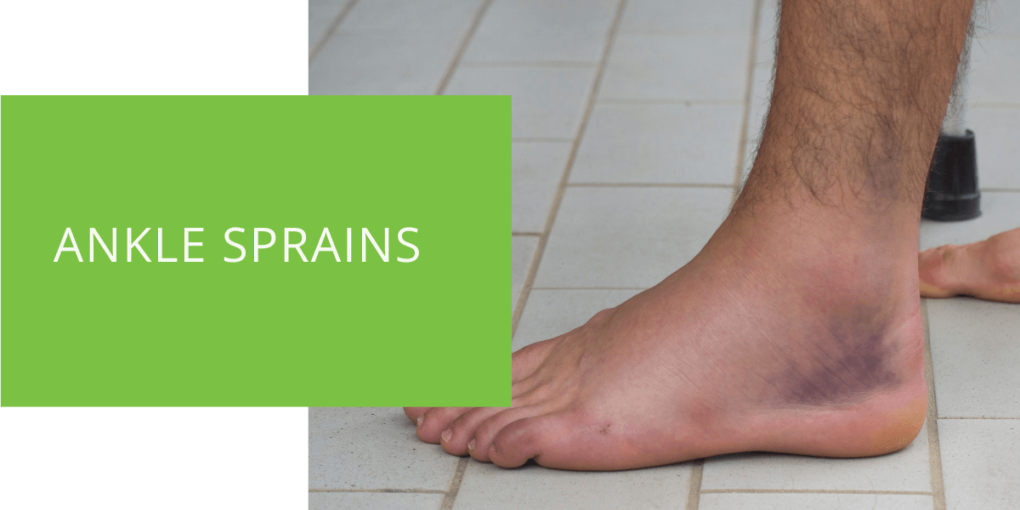Ankle Sprains: Symptoms, Causes & Treatment
Ankle sprains are a common injury that occurs when the ligaments in the ankle are stretched or torn. These ligaments provide support and stability to the ankle joint; when damaged, it can cause pain, swelling, and difficulty walking. This article will explore the different types of ankle sprains, their symptoms, causes, and treatment options. We will also discuss ways to prevent ankle sprains and what to do if you think you have sprained your ankle.
What is an Ankle Sprain?
An ankle sprain is an injury to the ligaments in the ankle joint. These ligaments help to stabilize the joint and provide support when you walk or run. When the ligaments are strained or sprained, it can cause pain, swelling, and difficulty walking.
There are three main types of ankle sprains:
- Inversion sprains: This sprain occurs when the ankle is twisted inward, causing the ligaments outside the ankle to stretch or tear.
- Eversion sprains: This type of sprain occurs when the ankle is twisted outward, causing the ligaments on the inside of the ankle to stretch or tear.
- Combined sprains: This type of sprain occurs when both inversion and eversion forces are applied to the ankle, causing multiple ligaments to be stretched or torn.

Symptoms of an Ankle Sprain
If you have sprained your ankle, you may experience the following symptoms:
- Pain and swelling: The injured ligaments may cause pain and swell in the ankle. The swelling may be more severe if the ligaments are torn.
- Bruising and discoloration: The injured area may also develop bruising and discoloration due to the injury.
- Difficulty walking or standing: Depending on the severity of the injury, you may have difficulty walking or standing on the injured ankle.
Causes of Ankle Sprains
There are several common causes of ankle sprains, including:
- Tripping or falling: If you trip or fall, you may twist your ankle and strain or sprain the ligaments.
- Twisting or turning the ankle inward: If you twist or turn your ankle inward, you may stretch or tear the ligaments outside the ankle.
- Landing on the foot incorrectly: If you land on your foot incorrectly, such as when participating in sports, you may strain or sprain the ligaments in the ankle.

Treatment Options for Ankle Sprains
The treatment for a sprained ankle will depend on the severity of the injury. Some common treatment options include:
- RICE method: The RICE method is a treatment approach that involves Rest, Ice, Compression, and Elevation. The RICE method aims to reduce swelling and inflammation in the injured area.
- Medications: Your doctor may prescribe medications, such as nonsteroidal anti-inflammatory drugs (NSAIDs), to help reduce pain and swelling.
- Physical therapy: Physical therapy may be recommended to help improve the range of motion and strength in the injured ankle.
- Surgery: In severe cases, surgery may be necessary to repair damaged ligaments.

Preventing Ankle Sprains
There are several steps you can take to help prevent ankle sprains, including:
- Wearing proper footwear: Wearing shoes with good support and cushioning can help to prevent ankle sprains, especially when participating in activities that may put additional strain on the ankles, such as running or sports.
- Stretching and strengthening exercises: Stretching and strengthening exercises can help to improve the stability and strength of the ankles, reducing the risk of injury.
- Paying attention to surroundings: Being aware of your surroundings and avoiding uneven surfaces or areas with tripping hazards can help to prevent accidental falls that may lead to an ankle sprain.
Conclusion
Ankle sprains are a common type of injury that can cause pain, swelling, and difficulty walking. Treatment options for a sprained ankle will depend on the severity of the injury and may include the RICE method, medications, physical therapy, or surgery. To help prevent ankle sprains, it is important to wear proper footwear, engage in stretching and strengthening exercises, and pay attention to your surroundings.
If you think you may have sprained your ankle, it is important to seek medical attention to determine the appropriate treatment plan. A podiatrist or other medical professional can help to diagnose and treat your injury and may recommend a rehabilitation and exercise program to help you recover and return to normal activities.
FAQ
What are the main causes of ankle sprains?
The main causes of ankle sprains are tripping or falling, twisting or turning the ankle inward, and landing on the foot incorrectly.
What is the most common treatment for an ankle sprain?
The most common treatment for an ankle sprain is the RICE method, which stands for Rest, Ice, Compression, and Elevation. The RICE method aims to reduce swelling and inflammation in the injured area.
What is the correct treatment for a sprained ankle?
The correct treatment for a sprained ankle will depend on the severity of the injury. In addition to the RICE method, treatment options may include medications, physical therapy, or surgery. It is important to seek medical attention to determine the appropriate treatment plan.
Is it OK to walk on a sprained ankle?
If you have a mild sprain, it may be okay to walk on your ankle, but you should be cautious and avoid putting too much weight on the injured ankle. If you have a severe sprain or cannot bear weight on the ankle, it is important to follow your doctor's instructions and avoid walking on the injured ankle.
How long should you let a sprained ankle heal?
The length of time it takes for a sprained ankle to heal will depend on the severity of the injury. A mild sprain may take a few days to a week to heal, while a severe sprain may take several weeks or longer. It is important to follow your doctor's instructions and attend any recommended physical therapy sessions to ensure a proper recovery.

